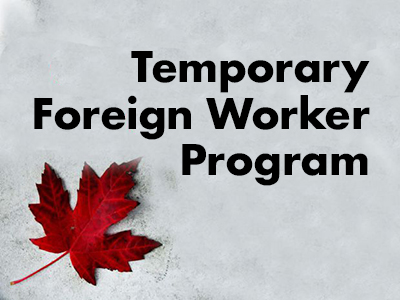
Major Changes to Canada’s Temporary Foreign Worker Program (TFWP) in 2024: A Year in Review
Table of Contents
- Introduction to the Temporary Foreign Worker Program (TFWP)
- Key Changes to the TFWP in 2024
- Reduction in LMIA Validity
- Visitors No Longer Eligible to Apply for Work Permits from Within Canada
- Suspension of Processing Low-Wage LMIAs
- Limitation on Employment Duration for Low-Wage Workers
- Reduction of Workforce Caps for Low-Wage Stream
- Discontinuation of Attestations as Proof for Employers
- Introduction of Annual Targets for TFWP Work Permits
- Increase in Wage Requirements for High-Wage Stream
- Impact of TFWP Changes on Employers and Foreign Workers
- Future Prospects: A Review of the Standing Committee on Citizenship and Immigration’s Recommendations
- Conclusion
1. Introduction to the Temporary Foreign Worker Program (TFWP)
The Temporary Foreign Worker Program (TFWP) is a key Canadian immigration initiative designed to fill labor shortages by allowing foreign nationals to work in Canada for a limited time. This program is vital for employers in sectors facing labor shortages that are unable to meet their workforce needs through the domestic labor market. Over time, the program has seen various updates to improve its effectiveness and adapt to changing economic and social conditions.
In 2024, significant modifications were made to the TFWP that impact both foreign workers and employers. These changes reflect Canada’s ongoing efforts to streamline its immigration system, address labor market dynamics, and ensure that the program serves both employers and foreign workers in a fair and efficient manner.
2. Key Changes to the TFWP in 2024
Reduction in LMIA Validity
One of the first and most significant changes to the TFWP in 2024 was the reduction in the validity period for Labour Market Impact Assessments (LMIAs). Prior to 2024, the validity of an LMIA for employers was set at 12 months, allowing them ample time to recruit foreign workers. However, as of May 1, 2024, this validity period has been reduced to just six months. The aim of this change is to ensure that employers continue to face relevant labor market conditions when hiring foreign workers, reflecting more accurate and up-to-date labor needs.
- Effective Date: May 1, 2024
- Exemption: Employers participating in the Recognized Employer Pilot Program are exempt from this change.
Visitors No Longer Eligible to Apply for Work Permits from Within Canada
Another significant reform to the TFWP was the discontinuation of the temporary public policy that allowed foreign nationals on visitor visas to apply for job-offer-supported work permits while remaining inside Canada. This temporary policy, which was introduced during the COVID-19 pandemic, allowed some visitors to transition into the workforce without needing to leave the country. However, as of August 28, 2024, this measure has ended, and all foreign nationals must now leave Canada to apply for a work permit based on a job offer.
- Effective Date: August 28, 2024
Suspension of Processing Low-Wage LMIAs
In a bid to reduce reliance on low-wage foreign labor in areas with already high unemployment rates, the Canadian government announced the suspension of processing LMIAs for low-wage positions in census metropolitan areas (CMAs) with unemployment rates of 6% or higher. The policy, effective September 26, 2024, also introduced exceptions for sectors critical to food security and healthcare, including agriculture, food processing, and fish processing.
This change aligns with broader efforts to prioritize higher-skilled workers and reduce the reliance on temporary low-wage foreign labor in areas where Canadian workers may be available.
- Effective Date: September 26, 2024
- Exceptions: Agricultural, food processing, and healthcare sectors
Limitation on Employment Duration for Low-Wage Workers
As of September 26, 2024, the government has reduced the maximum employment duration for workers hired under the low-wage stream of the TFWP. Previously, workers could be employed for up to two years, but this limit has now been reduced to one year. This change is part of an effort to encourage employers to consider more sustainable workforce solutions and ensure that foreign labor is being used to fill immediate gaps rather than long-term, ongoing shortages.
- Effective Date: September 26, 2024
Reduction of Workforce Caps for Low-Wage Stream
Employers are now limited in how many low-wage foreign workers they can hire under the TFWP. For 2024, the cap has been reduced from 20% to 10% of the total workforce in most sectors. However, in industries like healthcare and construction, the cap remains higher at 20% of the workforce. This policy aims to encourage employers to hire more Canadian workers and rely less on temporary foreign labor for low-wage positions.
- Effective Date: September 26, 2024
Discontinuation of Attestations as Proof for Employers
In a significant policy shift, the government has stopped accepting attestations from legal professionals, accountants, and financial institution officials as proof of providing certain goods or services. This change, effective October 28, 2024, means that employers must provide alternative documentation to demonstrate compliance with TFWP requirements.
- Effective Date: October 28, 2024
Introduction of Annual Targets for TFWP Work Permits
For the first time, the Canadian government has introduced annual targets for the issuance of TFWP work permits. This change, announced on October 24, 2024, sets a target of 82,000 new work permits under the TFWP for the 2025 immigration year. This measure aims to better manage the flow of foreign workers into Canada, aligning with broader immigration goals.
- Target for 2025: 82,000 new TFWP work permits
Increase in Wage Requirements for High-Wage Stream
The federal government has raised the minimum wage requirements for workers in the high-wage stream of the TFWP. As of November 8, 2024, employers must ensure that workers earn the higher of either 20% more than the median wage for their position in their region or the wage earned by existing employees in the same role. This adjustment reflects the government’s commitment to ensuring that foreign workers are not exploited and are compensated fairly for their labor.
- Effective Date: November 8, 2024
3. Impact of TFWP Changes on Employers and Foreign Workers
These adjustments to the TFWP are expected to have both short-term and long-term impacts on employers and foreign workers. Employers in sectors that rely heavily on foreign labor, such as agriculture, healthcare, and construction, will need to adapt to new requirements and limitations. Many employers may face challenges in meeting the reduced caps on low-wage workers, while others may need to adjust their hiring practices to comply with the updated LMIA validity period and wage requirements.
Foreign workers may experience increased competition for high-wage roles as the eligibility criteria have been tightened. Additionally, workers who had previously planned to transition from visitor status to a work permit within Canada may now face challenges, as they will need to leave the country before applying for a work permit.
4. Future Prospects: A Review of the Standing Committee on Citizenship and Immigration’s Recommendations
In response to the ongoing evolution of the TFWP, the Standing Committee on Citizenship and Immigration (CIMM) conducted a review in 2024. The committee’s report, which included a series of recommendations, will likely influence future changes to the program. These recommendations focus on ensuring that foreign workers are treated fairly, improving employer compliance, and expanding pathways to permanent residency for skilled foreign workers.
5. Conclusion
2024 marked a year of major reforms for Canada’s Temporary Foreign Worker Program. These changes, which range from adjustments to LMIA validity and wage requirements to the introduction of annual targets and caps on low-wage employment, reflect the government’s ongoing efforts to address labor market needs while ensuring fair treatment of both foreign workers and Canadian citizens.
Employers, foreign workers, and immigration professionals will need to stay informed about these changes to ensure compliance and make the most of the opportunities available under the TFWP. As Canada continues to adapt its immigration policies to meet evolving labor market demands, it is likely that further updates to the TFWP will follow in the years to come.
For a free consultation about your work permit and student permit options, reach out to the CAD IMMIGRATION today!





